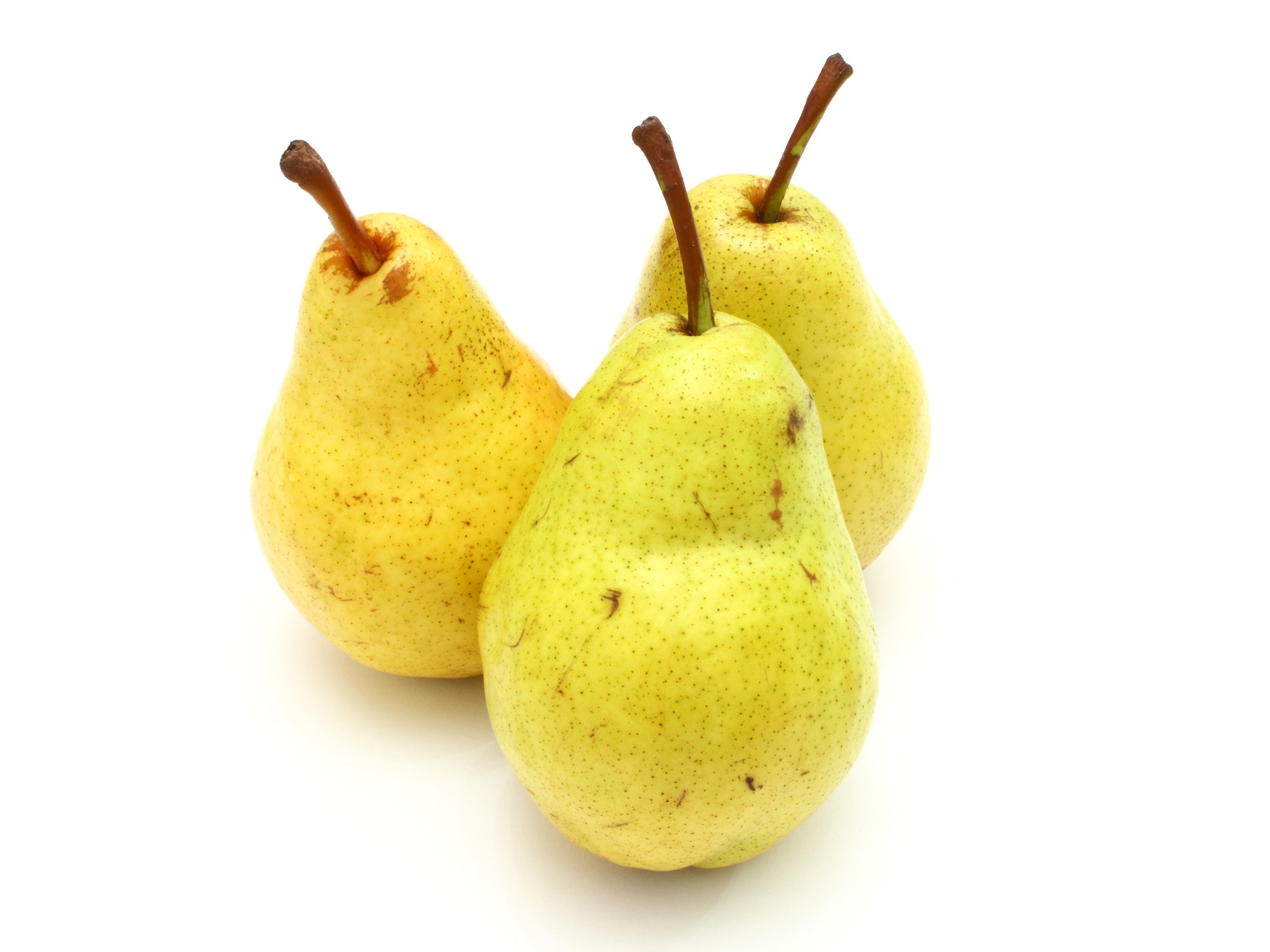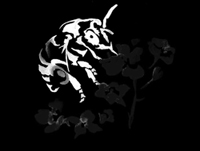Pears (Pyrus communis)

Mating & Breeding System: Pear flowers are perfect, with five styles each associated with a pair of ovules, and numerous stamens. Flowers are self-incompatible and fertilization and fruit set require cross-pollination with pollen from an appropriate pollenizer cultivar.
Pollination, Quality & Yield: For cross-pollination of pear, insects are required to carry pollen between blossoms. Large, symmetrical pears are produced when full pollination occurs. Fruit from poorly pollinated flowers are likely to be shed within a short period of time, but those that do develop will be malformed and small. Early fertilization is also desirable to allow the development of mature fruit. Although pollen foragers find the flowers appealing, attracting bees to pear flowers can be difficult as the sugar concentration of the nectar is low. Also, pears bloom early in the spring when pollinator activity can be low.
Pollination Recommendations: Pear flowers are self-incompatible and must be fertilized by pollen from a different cultivar. These pollenizer cultivars should make up 10-15% of trees in the orchard, and be spaced evenly between production trees.
Honey bees are the pollinators of choice. The standard recommendation is to place 2-5 strong colonies per hectare when 10-20% of flowers are in bloom. Enough blossoms must be present so bees do not seek food resources elsewhere.
Orienting hive or domicile openings to the south facilitates warming in the morning and encourages bee activity. Honey bees will not forage below 15°C or in excessive wind or dampness, so unfavorable weather during the spring flowering period can lead to fertilization problems. Bumble bees, blue orchard bees, wild bees and possibly flies may also be valuable for pear pollination, especially during inclement weather and in small orchards adjacent to wild habitat.
To maximize pollination in pears (whose flowers can be less attractive than weeds are to foraging insects) growers should mow competing blooms during the crop blooming period. It is illegal to spray any type of pesticide, including herbicides, in an orchard when the crop is in bloom. Doing so may also violate the terms of pollination agreements with beekeepers.
Managing competing blooms is an important concern when managing pollination. If encouraging wild pollinators, or establishing an alternative pollinator such as the blue orchard bee, is of interest to the orchardist, alternate forage is required for these bees to complete their life cycle (see Examples of Alternative Pollinator Forage and “Habitat and Food”). One option for orchardists is to plant forage between tree rows which will flower after the crop bloom period. However, growers should also be aware that alternative forage may attract bees to orchards off-bloom. This can result in bee kills for neighbouring beekeepers if the grower uses insecticides.
References
Benedek, P. & Nyeki, J. 1996. Fruit set of selected self-sterile and self-fertile fruit cultivars as affected by the duration of insect pollination. Acta Horticulturae 423:57-63.
Bosch, J. & Kemp, W.P. 1999. Exceptional cherry production in an orchard pollinated with blue orchard bees. Bee World 80:163-173.
Bosch, J., Kemp, W.P., & Trostle, G.E. 2006. Bee population returns and cherry yields in an orchard pollinated with Osmia lignaria (Hymenoptera: Megachilidae). Journal of Economic Entomology 99:408-413.
Delaplane, K.S. & Mayer, D.F. 2000. Crop Pollination by Bees. CABI Publishing, New York.
Free, J.B. 1993. Insect Pollination of Crops, 2nd edition. Academic Press.
Jacquemart, A..L., Michotte-Van der Aa, A., & Raspe, O. 2006. Compatibility and pollinator efficiency tests on Pyrus communis L. cv.'Conference'. Journal of Horticultural Science and Biotechnology. 81:827-830.
Kevan, P.G. 1988. Pollination, crops and bees. OMAFRA publication 72.
Konarska, A., Masierowska, M., & Weryszko-Chmielewska, E. 2005. The structure of nectaries and nectar secretion in common pear (Pyrus communis L.). Journal of Apicultural Science 49:85-92.
Scott-Dupree, C.D. & Winston, M.L. 1987. Wild bee pollinator diversity and abundance in orchard and uncultivated habitats in the Okanagan Valley, British Columbia. Canadian Entomologist 119:735-745.
Scott-Dupree, C.D., Winston, M., Hergert, G., Jay, S.C., Nelson, D., Gates, J., Termeer, B., & Otis, G. 1995. A guide to managing bees for crop pollination. Canadian Association of Professional Apiculturists, Aylesford NS.
Slingerland, K., Fisher, H., & Hunter, D. 2002a. Pear cultivars. OMAFRA FactSheet 02-039.
Thomson, J.D. & Goodell, K. 2001. Pollen removal and deposition by honeybee and bumblebee visitors to apple and almond flowers. Journal of Applied Ecology 38:1032-1044.
